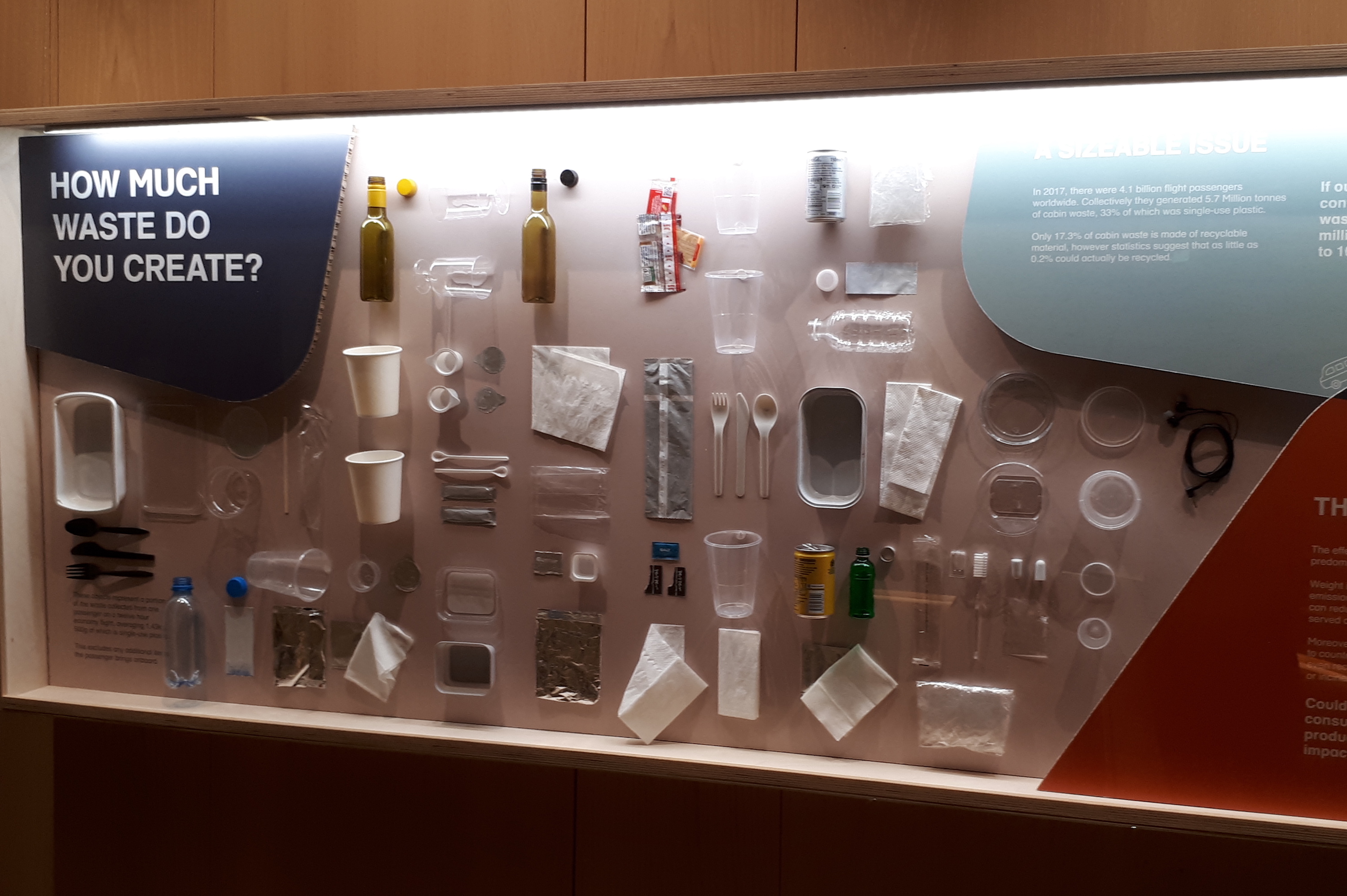Industry Analysis
Designing sustainable passenger experiences

For every passenger on a long-haul flight, a kilogram of single-use waste is generated. This includes single-use earphones, plastic cups, meal trays, condiments, cutlery, and the list goes on. Much of this waste will take hundreds of years to degrade.
This was powerfully illustrated at the PriestmanGoode ‘Get Onboard: Reduce. Reuse. Rethink’ display, currently on show at London Design Museum. This instillation aims to shine a light on the material waste generated through air travel, its impact on the environment and the solutions in development to address this. London-based design agency PriestmanGoode issues a critical call for change in mindsets and behaviour patterns, highlighting the extensive amount of single-use plastic water bottles used by one passenger travelling through an airport.
This single-use waste could undoubtedly be reduced if passengers invest in one reusable water bottle. It is clear that design will play the leading role in shaping the future of sustainable air travel. The better the design of a water bottle, the more likely passengers will be encouraged to use it and take with them on their travels.
The display also emphasised the importance of looking at new and innovative materials (many of which are recycled, repurposed and typically considered as waste) to use to make onboard products and utensils. Some of these materials, such as coconut wood and bamboo, are starting to be seen as viable options with environmentally-conscious manufacturers, with other materials deriving from more unusual sources including algae, potato starch, coffee grounds and aqua faba.
The answer to making air travel sustainable? Getting both passengers and businesses on board. The power of design evidently has the potential to make sustainable options more accessible, convenient and desirable to all: a must in today’s world in which climate change can no longer be ignored.